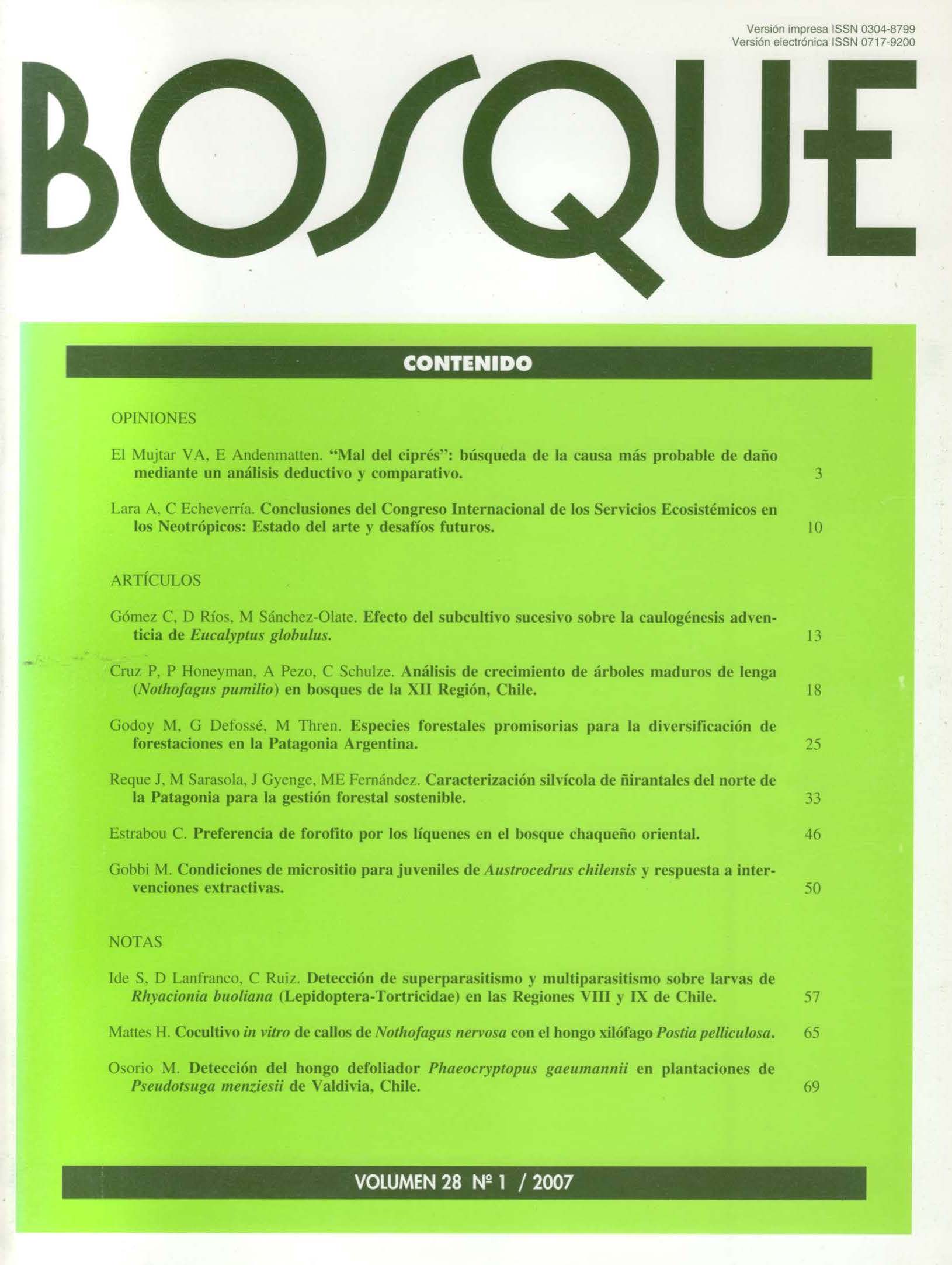Main Article Content
Apr 30, 2007
Abstract
An in vitro co-culture test between raulí (Nothofagus nervosa) calli of different genotypes and Postia pelliculosa, a frequent wood-destroying fungus in Nothofagus, is presented. Calli were regenerated from leaves and stem sections of in vitro plants. Calli induction and multiplication were performed with the Broadleaved Tree Medium (BTM) supplemented with different concentrations of plant regulators (2,4-dichlorophenoxiacetic acid, 6-benzyl aminopurine) vitamins (thiamine) and amino acids (glycine, glutamine, lysine). Cocultures were carried out in the BTM without glutamine, lysine and plant regulators. Twelve replicates of each fungal strain and clone combination were used. Although calli were successfully multiplied in the BTM with 6-benzyl Aminopurine (0.5 mg L–1) and naphthalene acetic acid (0.02 mg L–1), they showed a recalcitrant behavior. After 35 days of coculture initiation, fungal mycelium invaded calli in 91.3% of cultures; calli showed conspicuous changes in coloration and friability.


